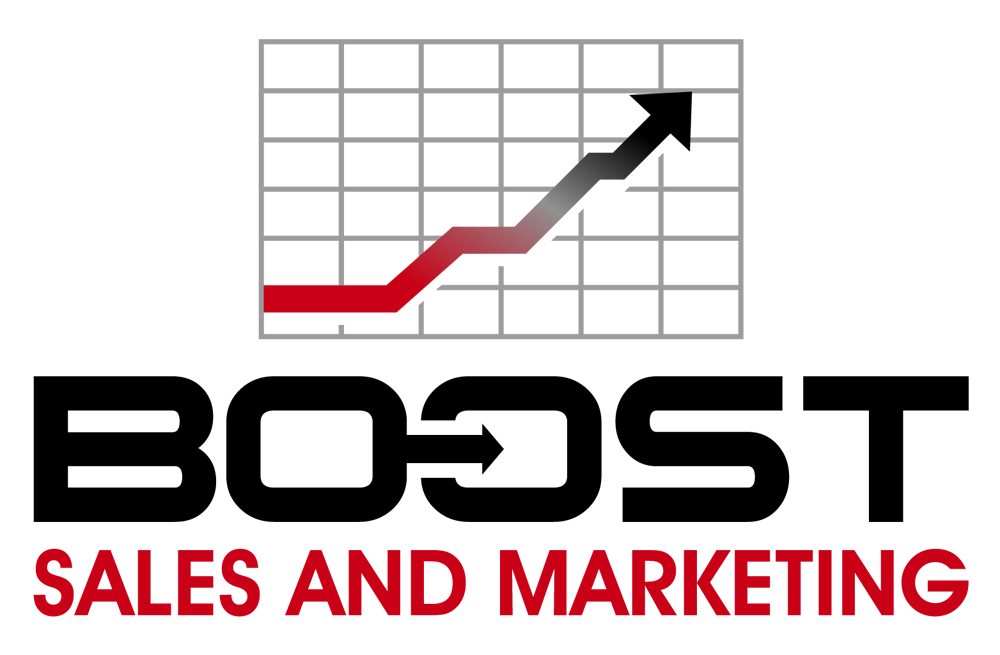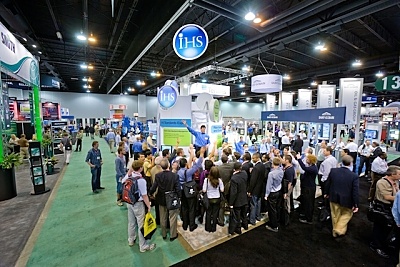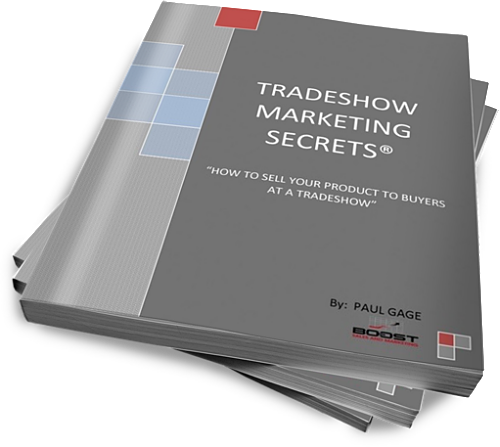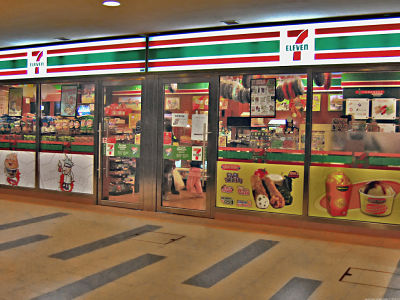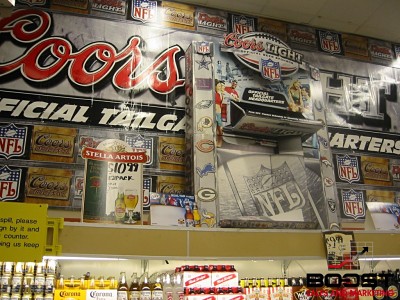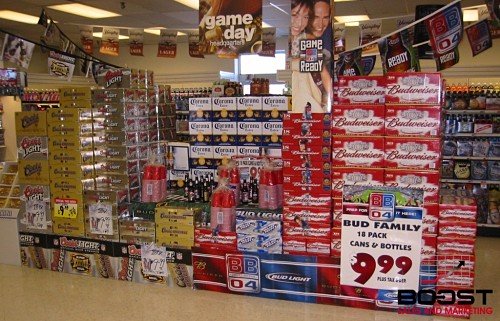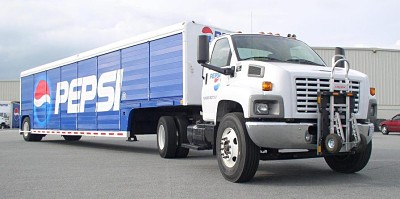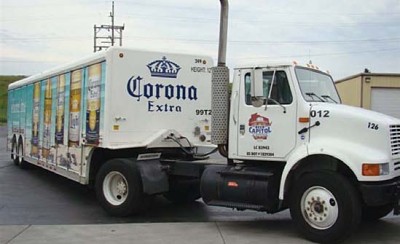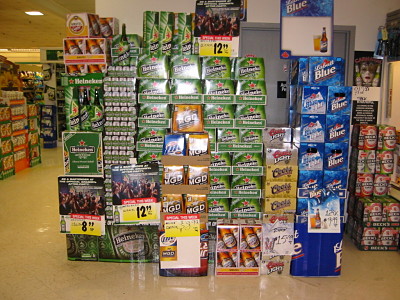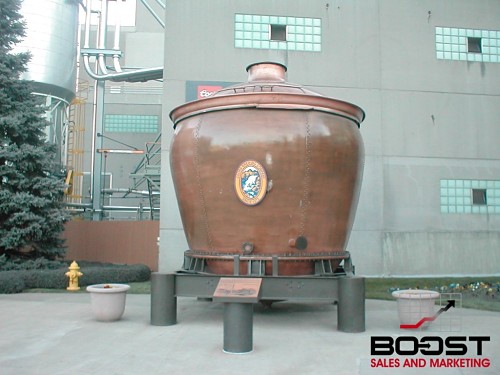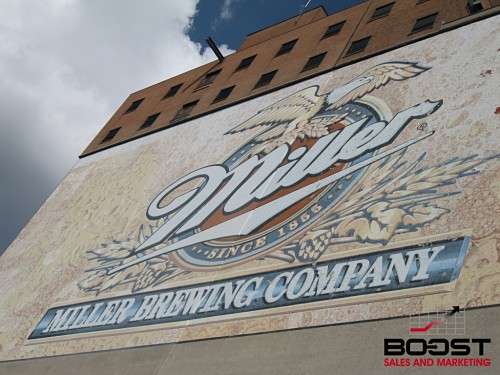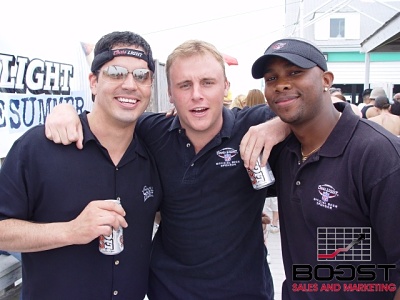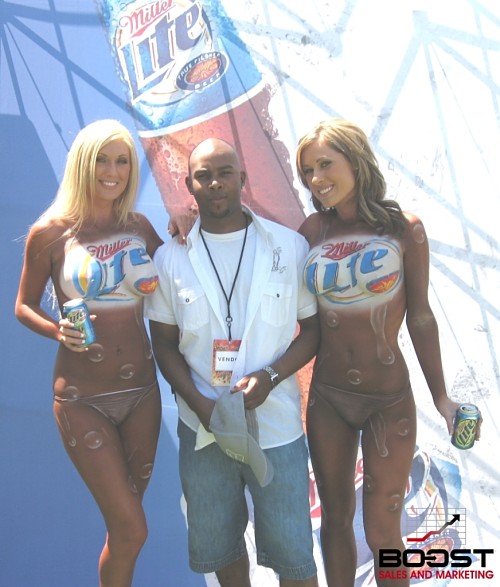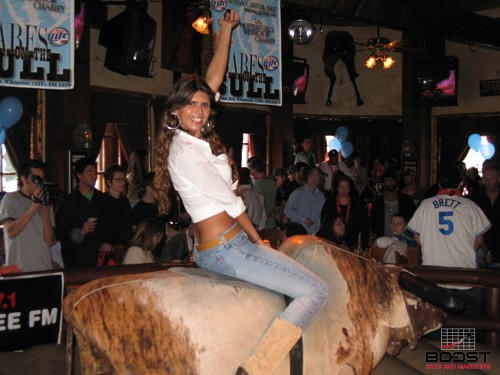How to Sell Retailers Your New Products
5 Tips to sell your new product to retailers:
1. Research all the trade channels for your new beverage.
2. Contact the beverage buyer and set an appointment.
3. Prepare for the interview with the beverage buyer.
4. Present a winning sales and marketing presentation.
5. Offer on-going sales support to the retailer.
OBTAINING AN APPOINTMENT TO SEE AN APPROPRIATE BUYER
The first step in contacting a retailer is knowing which retail organization your product is right for. Then you need to call the organization and ask to speak to the buyer for your type of product.
If you are selling a new beverage, you would ask to speak to the beverage buyer. You can also go online and visit the contact us form and send an email asking for information on who you need to speak with to present your new beverage to.
What to do if you reach the receptionist:
The receptionist is able to direct an inquiry to the appropriate buyer when it has been made clear to which precise category the product belongs.
It is important to request the name and title of the buyer to whom the product will be presented before being transferred to the buyer or relevant department.
You want to make sure you are speaking to the right person. Also you may ask the receptionist if you could get their direct number in case you get disconnected.
Be aware that a screening procedure may be in operation to prevent immediate contact with the buyer. This happens more often than not.
It's usually possible to make an appointment with the receptionist if the organization has an open to buy day.
If they do not have an open-to-buy day, it is important that you set an appointment directly with the decision maker and not the assistant, who does not have the authority to buy.
Try not to discuss too much details about the product, or any aspect of it, over the telephone. Remember that the purpose of the call is to get an appointment to see the buyer.
Examples of appointment making phrases are:
.. "We have a unique product that would be perfect for your customers"
.. "We have an interesting product opportunity which we would like to discuss with you"
.. "We have a product opportunity to attract new customers to your stores and would like to show it to you"
.. "We would like to show you a unique product, ideally suited to (store name), and would like an appointment to discuss it"
You also want to communicate the value of your product and that you have a lot of consumer demand for your product. If you say this, than you better have evidence to back it up.
How many followers or likes do you have on your facebook business page?
Buyers are looking for products that can make them money and you have to prove that you have consumers willing to purchase your product...
Most new products do not have the sales to back it up unless you have been selling your product online.
If pressed to be specific about the product before an interview will be granted, emphasize that the product needs to be seen (touched, smelt, tasted or applied) because it is new and different and that is the reason an appointment is necessary.
You need to be careful to avoid a possible response that the retailer already has your type of product and that no more are required.
i.e. if the product were a hammer, a better description, when endeavoring to obtain an appointment, might be "a special device for knocking in nails without the loud sound".
Prepare for the meeting with the Retail Buyer
Preparing properly and extensively before the meeting will almost guarantee to get the buyer thinking about purchasing your beverage.
When a comprehensive and detailed Marketing Plan has been developed, preparing for the meeting with a retail buyer will be simple because the following important issues will have already been addressed:
1. The beverage packaging will meet the needs of the retail store and their consumers. The beverages packaging must fit their shelves and stand out, so it will sell quickly.
2. You should be able to show the buyer that you have researched the market by showing data that consumers actually want your new beverage.
3. The unique benefits and selling points of the beverage will have been determined and outlined.
4. The competitive advantages of the beverage will have been fully identified - this requires a thorough knowledge of your product and your competitors' products.
5. The market segment to which the product is aimed will have been defined, and its size estimated.
6. Advertising and promotion plans will be available as well as adequate budgets.
7. Marketing and Point of Sale material will have been developed in a way to stop the shopper and generate sales.
8. A decision will have been made as to the channels of distribution in which the beverage is best suited for: i.e. independents, supermarket/chain stores, buying groups, wholesalers, franchisers, etc.
9. The beverage will have been identified as being: budget, middle of the road, up-market or exclusive in terms of price, quality and value.
10. Prior knowledge will also have been gained as to the buying patterns of the selected retail buyer, with due regard to seasonality and special events.
It's important that you understand the culture of the retail store and how the buyer makes their buying decisions.
11. The retailer's ability to pay, and the time taken to pay, will have been determined from trade references and/or a credit checking service; do not assume strong solvency no matter how large the retailer.
Do they accept early pay discounts?
- Do they penalize if you ship late?
- Do they have any extra fees to carry your beverage such as line fee etc..
12. Background information on the retailer's operation will also have been researched, particularly with regard to their specific trading terms and conditions, in-store policies and layouts.
13. Your cost and pricing strategy will have been decided - see below.
COST:
All costs, including the 'hidden' costs, must be fully identified before a price is set, and before the sales
presentation.
Failure by to identify all costs before the sales presentation often leads to under-pricing of the product and this can lead to low or no profitability.
Research the following items for inclusion in your costing:
i.e Walmart will ask for your lowest price and you need to be certain you can at least make a profit or it does not make sense to sell your product at a loss.
Contributions and Charges:
It is the usual practice of the larger retailers to insist on certain financial contributions and discounts as well as receiving their retail mark-up. The additional financial contributions will vary between retailers.
Typical fees and charges are:
. Line fees (to have the product listed).
. Warehouse fees (covers the cost of distribution to branches).
. Shelf space fees (for permanent shelf space in all stores).
. Promotion fees (to offset costs of in-store display material).
. Wastage fees (to offset general wastage).
. Settlement fees (a discount for prompt payment by the retailer).
. Catalog fees (for the product to be listed in a special offer sales sheet). This is important if you want your product to sell well and it also show the retailer that you are a good supplier.
. Co-operative advertising in seasonal brochures will also be an expected contribution.
In most cases fees are based on a percentage of the annual turnover of the product but some are levied on a one-off basis. All can be subject to negotiation.
Note: If the retailer is not really interested in your product, perhaps because they expect sales will be too low, or that the profitability is not high enough, or they already have similar products that they are happy with, they may ask you for an exorbitant Line Fee of say $50,000.
This is intended to dissuade you from persisting, but it enables them to avoid having to say "No" directly to your face.
Delivery costs:
Most retailers will expect delivery on an FIS (free into store) basis, which means that the supplier is responsible for the freight and insurance charges on the goods until they are unloaded and signed for at the retailer's premises.
Some retailers will only accept goods which are on pallets.
There are some retailers that will pay for the shipping because they are more efficient at shipping product such as Walmart.
Then some will want you to pay for shipping.
You must really be sure to add this cost into your pricing because you are not sure if the cost of shipping will go up throughout your relationship with the retailer.
Penalties:
If a retailers shelves are empty because you did not deliver on time can cause a huge problem with the retailer. The retailer loses money when there is an empty spot where your product should be.
Continuity of supply is paramount to a retailer and the supplier's awareness of delivery complications is vital, especially if interstate transport is involved.
In some cases a penalty is imposed by the retailer if goods arrive late or are short supplied.
Product Returns:
Most retailers have a return policy whereby damaged or surplus stock is returned to the supplier at the supplier's expense.
Some retailers will give you the option of marking down the product to sale and if the product is damaged they can charge you a fee to dispose of the product instead of returning it to you which means extra fees for shipping.
Bar Codes:
Virtually all retailers require all product to be bar coded.
Only shops which are not computerized will accept goods without a UPC number..
Merchandising:
Many retailers also expect the supplier to keep stock tidy in the store, to take stock on a regular basis, and to place orders for the retailer, sometimes via on-line links to the retailer's computer.
Most retailers expect this from a beverage vendor which has expiration dates and the product needs to be rotated.
Vendors such as Pepsi want to be able to merchandise their product because they want to be in control of the quality and space of their product.
PRICING:
A pricing strategy should be decided in advance i.e. cost plus, or what the market will bear, and you must know your bottom-line price.
Be aware that more and more retailers are asking suppliers to reduce their real wholesale price over a period of time. This can be taken into account when initially pricing the product and/or by achieving lower costs through future efficiency.
The Retailer's Mark-Up:
It is not absolutely essential to know what mark-up might be applied by the retailer if you know what your pricing strategy and "bottom-line" price is.
Nevertheless, many retailers will give suppliers an indication as to the mark-up they expect before the sales presentation.
Remember that you cannot legally tell the retailer what to charge. Mark-ups can vary from 2% to 100+% on the wholesale price depending on the type of product, retailer's strategy and economic conditions.
Costco and other club stores usually operate off of a 13% markup where as Walmart operates off a 30% markup.
Convenience stores usually want a 45% markup. These markups also depend on the product category.
THE SALES PRESENTATION FOLDER:
The final stage of preparation is the creation of a Sales Presentation Folder.
This ensures that all aspects such as, the target market, the market research, consumer test results, consumer benefits, advertising and promotional plans of the product are presented to the buyer in the correct sequence and with the correct emphasis.
Each page of the folder should cover one aspect relevant to the product. By taking each aspect in turn and obtaining the buyer's agreement stage by stage, any likelihood of negativity from the buyer is reduced.
It is of course important to talk about the 'features' or 'characteristics' of your product, but these must then be clearly linked to the 'benefit' of that 'feature' or 'characteristic' to the end consumer.
Sellers often make the mistake of talking only about features and not the benefits - and hence they fail to make a sale!
When this essential 'homework' has been completed, the product should be 'market ready' and an approach to a retailer can be made.
THE SALES PRESENTATION
It is important to arrive on time for the meeting and that the sample of the product is perfect and exactly as it will be supplied.
The Sales Presentation Folder, together with all documentation on market research and written consumer test results, must be readily available.
Your product should be in a case or wrapped, so that it is not immediately visible to the buyer.
The purpose of this approach is to get the buyer's positive interest before showing the product and thus avoid the possibility of a negative decision being made without first having some relevant information.
Therefore on this first visit, make introductions pleasant but formal, avoid 'small talk' and begin by providing a short background of the product's development, its competitive edge, and main product benefits using the Sales Presentation Folder.
You need to remember that the buyer may have other appointments after you and if you talk about small things trying to get the buyer to like you, you may miss the opportunity to sell the buyer your product.
When the buyer has been made aware of these facts THEN show the product to the buyer and reinforce the consumer benefits, which will have been outlined a few moments before.
Continue by presenting the market research results, indicate the target market and discuss advertising and promotion plans and possibly offer exclusivity for a limited period only if you feel the buyer is not that interested.
Make sure you also put together a projection of what you think you will be able to sell and how much the retailer can make.
Once you understand what a buyer is evaluated on you will understand why sales and profit matter..
Listen to what the buyer is saying, answer the buyer's questions and dispel buying objections positively.
Overcoming Objections:
One accepted method to use to overcome buying objections and to dispel doubts in the buyer's mind is the "Yes-But " technique.
This means that when an objection is raised, such as, "too expensive, not enough demand, wrong color, wrong style, not as good as current stock" etc., the answer of "Yes-But," followed by the re-emphasizing of the unique consumer benefits of the product and the market research results helps to negate the objection.
It is vitally important to always emphasize the unique consumer benefits and market research results and not the 'technical' details of a product when presenting a product to a buyer.
The retail buyer may not tell you directly to your face, they may not want to stock your product because it is a single product and they want an entire line.
Asking for the Order and Closing the Sale:
Once you have successfully answered all of the buyers concerns and objections, the sale must be closed:
i.e. "When would you require delivery?" or "How would you be sending the purchase order?"
Much will depend on the type of product and buying practice of the retail organization as to whether a firm commitment to buy will be given at the time of the first interview.
It may be that a buying committee has to be involved, and if it is not permissible for a presentation to be made personally, then a copy of the Sales Presentation Folder should accompany the sample for the buying committee's consideration.
When the commitment is given, remember, it will be subject to rigorous terms and conditions set out by the retailer (see Costing and Pricing above).
Initial acceptance is usually for a trial period, for example 3 months, in which time consumer acceptance will be assessed.
Some retail outlets such as Walmart may give you a percentage of stores to start out with just to make sure you can handle the demand and delivery.
Small business suppliers should be aware that large retailers may not want to buy direct in small quantities so they may refer you to a broker or wholesaler so that the retailer's purchases can be consolidated.
It also cost the retailers a lot of money to set up new vendors that only have single item products.
AFTER SALES SUPPORT
All retailers will expect an after-sales support from a supplier. This can be as minimal as a regular telephone call and occasional visit to a single small independent retailer, or as complex as the supply of a merchandising force visiting every branch of a large retailer on a daily basis.
However large or small this operation will be, its purpose is to assist the sales of the product to the consumer.
The retailer will also require you to make sure your product is selling up to expectations.. if not you need to quickly make adjustments.
Competition is fierce in the market place, with each supplier making sure that his or her product is displayed to maximum advantage and that the product condition is perfect.
Sales and marketing support, advice and motivation of the retail staff is also essential.
Every competitive supplier to the retail trade is involved in applying their utmost effort to ensuring that their product sells. The newer the product, the more essential this activity becomes.
You may also need to speak with the staff of the retail account and offer incentives to focus on your product if allowed.
There are many things you can do to increase the awareness of your product. This comes back to your marketing plan.
SUMMARY
When offering a product to a buyer, remember the buyer's criteria and what they are judged on:
.. What appeal does your product have to the consumer?
.. Why will consumers buy your product?
.. Where does it fit into the range currently stocked?
.. Who are your competitors?
.. Does it show sufficient profit?
.. How will it be displayed?
.. How is it to be advertised and promoted and are you financially able to budget for this?
.. What are the pack sizes?
.. Is the continuity of supply secure? i.e. are you able to keep up with demand?
.. What after-sales service is available?
Remember also:
.. Retailers are "middlemen" between suppliers and consumers and their objective is to generate the maximum dollar profit per square foot of available selling space.
If your product can generate more dollars per square foot than an existing product, you will displace them - and vice-versa!
.. Retailers are not particularly interested in whose product they sell unless your product is unique and you offer exclusive selling rights.
.. It is the supplier's responsibility to ensure that consumers purchase their product and that the product is a quality product.
Retailers do not want to sell a product that might have a high return rate.
Success is assured with careful planning, awareness and research of the retailer's terms and conditions, a structured sales presentation and strong after-sales service.
Click here and Contact me if you need help selling your product to retailers
I have sold beverages and other products to hundreds of retailers and have built strong relationships with some of the largest retail account buyers.
I have contacts with distributors and brokers that can help get your new product in front of retail buyers.



